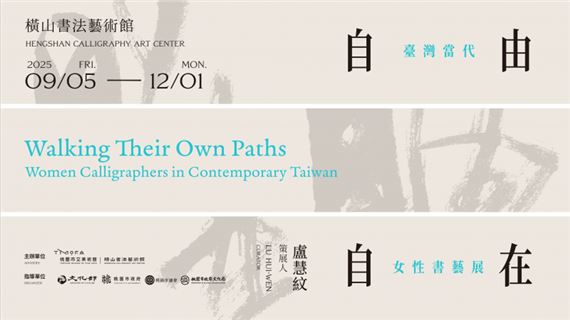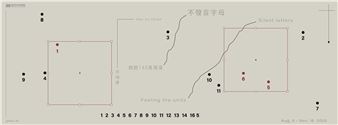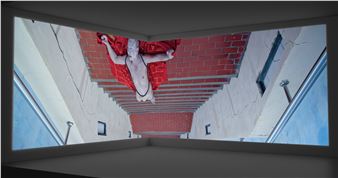Walking Their Own Paths: Women Calligraphers in Contemporary Taiwan
Walking Their Own Paths: Women Calligraphers in Contemporary Taiwan is the first large-scale exhibition centered on female calligraphers in Taiwan. Featuring artists from different generations, backgrounds, and styles, the exhibition aims to present the rich diversity of women’s creative expressions in contemporary Taiwanese calligraphy. It also highlights the journeys these women have taken and the life experiences expressed through their art.
Chinese calligraphy carries over three thousand years of cultural history. It is not only an art form rooted in philosophical depth and stylistic complexity but also one shaped by evolving social and cultural environments. In traditional calligraphy histories, women have rarely taken center stage. They are often mentioned in passing and sidelined as wives or daughters of male calligraphers, with their styles viewed as extensions of their male relatives. This marginalization reflects the societal position women held in traditional Han culture. Since the early 20th century, with the expansion of education and increasing gender equality, more women have engaged in calligraphy and achieved recognition. Their growing presence raises important questions. How do women learn and create within a tradition shaped by male aesthetics? How are their works recorded and evaluated? And perhaps most importantly, how do they claim a space of their own within this legacy?
Over the past century, Taiwan has experienced major political, social, and cultural transformations. Alongside these paradigm shifts, women's roles and self-perceptions have evolved. This exhibition spans a century of work, beginning with early figures from the Japanese colonial period such as Cai Bi-yin, Chang Li Der-her, and Huang Bao-ju. It continues with calligraphers who arrived with the Nationalist government in 1949—such as Chang Mo-chun, Tan Shu, Gu Ruei-hua, and Feng Ji-rong—and extends to the present day. Participating artists span three generations. The eldest are over 85 years old; the youngest, not yet 30. Some break gender stereotypes. Others respond to the new political and cultural climate following the end of martial law in the 1980s. Some remain devoted to the spiritual and aesthetic values of traditional calligraphy, while others draw inspiration from daily life to explore new possibilities.

Walking Their Own Paths: Women Calligraphers in Contemporary Taiwan is the first large-scale exhibition centered on female calligraphers in Taiwan. Featuring artists from different generations, backgrounds, and styles, the exhibition aims to present the rich diversity of women’s creative expressions in contemporary Taiwanese calligraphy. It also highlights the journeys these women have taken and the life experiences expressed through their art.
Chinese calligraphy carries over three thousand years of cultural history. It is not only an art form rooted in philosophical depth and stylistic complexity but also one shaped by evolving social and cultural environments. In traditional calligraphy histories, women have rarely taken center stage. They are often mentioned in passing and sidelined as wives or daughters of male calligraphers, with their styles viewed as extensions of their male relatives. This marginalization reflects the societal position women held in traditional Han culture. Since the early 20th century, with the expansion of education and increasing gender equality, more women have engaged in calligraphy and achieved recognition. Their growing presence raises important questions. How do women learn and create within a tradition shaped by male aesthetics? How are their works recorded and evaluated? And perhaps most importantly, how do they claim a space of their own within this legacy?
Over the past century, Taiwan has experienced major political, social, and cultural transformations. Alongside these paradigm shifts, women's roles and self-perceptions have evolved. This exhibition spans a century of work, beginning with early figures from the Japanese colonial period such as Cai Bi-yin, Chang Li Der-her, and Huang Bao-ju. It continues with calligraphers who arrived with the Nationalist government in 1949—such as Chang Mo-chun, Tan Shu, Gu Ruei-hua, and Feng Ji-rong—and extends to the present day. Participating artists span three generations. The eldest are over 85 years old; the youngest, not yet 30. Some break gender stereotypes. Others respond to the new political and cultural climate following the end of martial law in the 1980s. Some remain devoted to the spiritual and aesthetic values of traditional calligraphy, while others draw inspiration from daily life to explore new possibilities.
Artists on show
Contact details


 ARTISTS
ARTISTS










